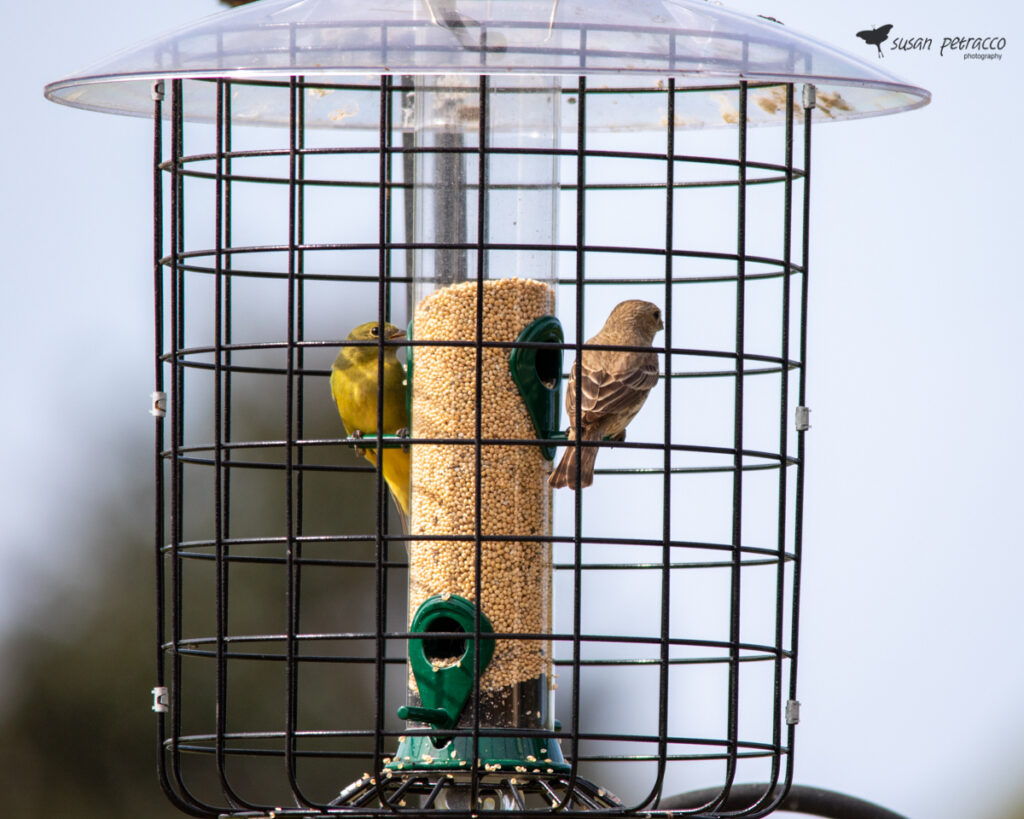Include a Water Feature
Additionally drawn to water, buntings favor flowing water over still water. Thus, provide a bird bath or bubbler for them to have access to water. A spot to drink and bathe is appreciated by other bird species as well; you never know what might show up!
Where to Find Painted Buntings
Obviously, make sure you live where these birds frequent! Painted buntings are native to North America and are predominantly found in the southeast part of the country. Here in Florida, we get them in the winter. Further north meaning coastal Georgia and the Carolinas theyre either year-round or there during the breeding season aka spring and summer. They also breed further west in Louisiana, Texas, and the like. Click here for a full painted bunting range map for the species so you can make sure theyre in your area.

White millet seed is a favorite food of painted buntings. In my yard, the buntings consume millet seed nearly exclusively. This bird seed is simple to find online, at your neighborhood bird supply store, or even at Home Depot, Walmart, Lowes, and other stores. Its also called white proso millet. Make sure you avoid purchasing milo, which is merely filler, or red millet, which is less appealing to them.
Like any other bird seed, store it tightly sealed in a humidity-resistant container to prevent mold growth, raccoon attraction, and insect infestation if stored outside.
White millet is also favored by other birds, so it’s imperative to have a feeder that deters grackles and mockingbirds.
My best experience with feeders has been with caged feeders designed for small songbirds. These feature a cage with holes big enough to keep other birds out but small enough for the buntings to get inside, holding the seed in a central tube. The buntings are said to feel safer as a result of knowing that predators cannot reach them. It keeps the blue jays and grackles out, though I’m not sure if they give it much thought.

Wild Birds Unlimited is the source of the cage bird feeder pictured above.
Since tray feeders are easier to see and take pictures of, I would really like to give them a try. From what I’ve heard, they also work pretty well. My excellent tray feeder is ineffective for white millet seed because the seeds fall through the grating. I might search for a tray feeder that can accommodate white millet next year.
Like many other birds, buntings desire a place to hide from potential predators. It’s beneficial to have shrubs or trees with dense foliage close by so they can rest and perch. Mine are about 10-12 feet from my feeders.
You can also incorporate plants that they seem to like. They might even contribute to drawing birds to your yard in the first place if they select the bird seed over the plants. After observing the buntings at the Viera wetlands foraging on Bidens alba, also known as Spanish needle or beggarticks, I added some of them to my butterfly garden a few years ago.
The number of buntings has been steadily declining for a number of years. They are frequently captured and illegally sold as caged birds. On the Partners in Flight Watch List, they are classified as a species of concern and as Near Threatened on the IUCN Red List. Remember that the next time you try to get buntings to come to your yard. You might not be successful for a season or two before you see these amazing birds in your yard.
Painted Buntings are shy and are often skittish around larger birds like grackles and crows. Buntings are more commonly found on or near a marsh or beach. They love to hang out in brushy areas or in full, bushy trees such as the crape myrtle where they can hide and seek protection from predators or larger birds.
FAQ
What is the best bird feeder for Painted Buntings?
What is the favorite food of a Painted Bunting?
Do Painted Buntings come to feeders?